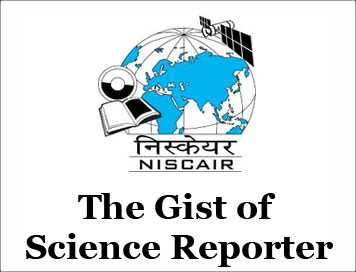(HOT) UPSC Current Affairs 2025 PDF
NEW! The Gist (NOV-2025) | E-BOOKS
(GIST OF SCIENCE REPORTER) SCIENTIFIC RESEARCH AND DEVELOPMENT IN INDIA
(GIST OF SCIENCE REPORTER) SCIENTIFIC RESEARCH AND DEVELOPMENT IN INDIA
(APRIL-2025)
SCIENTIFIC RESEARCH AND DEVELOPMENT IN INDIA
Why in News: India’s Gross Expenditure on R&D (GERD) has more than doubled in the last decade—from ₹60,196 crore in 2013–14 to ₹1,27,381 crore. This growth is shaping India’s future economy through innovation in areas like Artificial Intelligence, Biotechnology, and Quantum Computing.
Key Statistics on R&D in India
-
GERD rose from ₹60,196.75 crore (2010–11) to ₹1,27,380.96 crore (2020–21).
-
Per capita R&D spending rose from PPP$ 29.2 (2007–08) to PPP$ 42.0 (2020–21).
-
India contributed 3.1% of the world’s R&D spending (UNESCO Science Report, 2021)
-
Funding sources (2020–21):
-
Central Government: 43.7%
-
State Governments: 6.7%
-
Higher Education: 8.8%
-
Public Sector Industry: 4.4%
-
Private Sector Industry: 36.4%
-
Private sector spends 1.46% of sales on R&D vs. just 0.30% by public sector R&D units.
Key Challenges in India’s R&D Landscape
1. Low Investment
-
India spends much less on R&D compared to countries like the USA and China.
-
Private sector contribution is still limited.
2. Neglect of University Research
-
Top institutes (like IITs) get most funding; regular universities lack infrastructure and support.
-
Government reforms to promote excellence in universities are inadequate.
3. Access and Quality in Higher Education
-
Quality education is limited to elite institutions.
-
Many students cannot access STEM (science, tech, engineering, math) education due to high costs.
4. Economic Inequality
-
Income disparity limits access to science education and jobs.
-
Talented individuals often migrate abroad (brain drain).
5. Weak Industry Innovation
-
Many industries (e.g., pharma) focus on mass production, not innovation.
-
Poor collaboration between academia and industry.
Way Forward
A. Increase Investment in Science & Technology
-
Raise R&D spending to at least 2% of GDP.
-
Encourage private sector through tax incentives and R&D-friendly policies.
-
Develop innovation hubs, incubators, and global partnerships.
B. Promote Basic Science Research
-
Allocate fixed funds to fields like physics, chemistry, and biology.
-
Support interdisciplinary work (e.g., combining biology with data science).
-
Run public campaigns to build interest in science (e.g., citizen science projects).
-
Invite Indian-origin scientists abroad to contribute back.
C. Revamp STEM Education
-
Make learning practical and problem-solving-based (less rote memorization).
-
Expand Atal Tinkering Labs in schools.
-
Train teachers in modern STEM pedagogy.
-
Create internships and startup mentorship in schools and colleges.
D. Foster Collaborative Governance
-
Form a National Science Advisory Council with experts from all sectors.
-
Simplify research approvals, grant disbursements, and patent processes.
-
Launch “Science for Society” projects to solve real-life local problems.
CLICK HERE TO DOWNLOAD FULL PDF
CLICK HERE TO DOWNLOAD UPSC E-BOOKS
Study Material for UPSC General Studies Pre Cum Mains
Get The Gist 1 Year Subscription Online
Click Here to Download More Free Sample Material
<<Go Back To Main Page
Courtesy: Science Reporter



